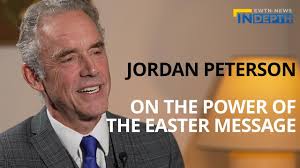When there exists what we may call a “dignity gap” between a higher dignity thing and a lower dignity thing, we (I mean society) sometimes close that gap by making the lower thing more like the higher thing, thereby narrowing the gap if not eliminating it completely, and thus raising the dignity of the lower thing.
For instance, American society felt that by limiting marriage to heterosexual couples we were offending against the dignity of homosexual couples. And so we created a new thing, same-sex marriage (“marriage equality”). And in that way, we raised the dignity of homosexual unions. Americans now officially consider same-sex marriage to have a dignity equal to that of traditional marriage and the act of homosexual love to have a dignity equal to that of the act of heterosexual love.
Similarly, human beings have traditionally been regarded as having much greater intrinsic dignity than non-human animals like dogs and cats, horses, and bunny rabbits. This ranking can be seen as a kind of injury to non-human animals: injurious in itself, and the cause of further injuries, since humans often felt free, because of their feelings of superiority, to treat non-human animals as little better than inanimate things.
But in recent times our ethical advanced guards have developed the idea that nonhuman animals have rights. These rights are akin to human rights, and they are a reminder that non-human animals are akin to human persons and should be treated accordingly. We (that is to say, those of us who, unlike myself, are truly up-to-date) now think of non-human animals as having a dignity that is almost human.
The trouble with all this, I suggest, is that it doesn’t simply raise the dignity of the lower thing; it also lowers the dignity of the higher thing. They meet someplace in the middle. In deciding that non-human animals are very like humans, we also decide by clear implication that humans are very like non-human animals – and accordingly may be treated as such.
Non-human animals, we have agreed for centuries, are purely biological beings; that is, entities without immortal souls. So if we humans are very like non-human animals, we too must be purely biological beings: entities without immortal souls. But the traditional belief in human dignity has rested on the logically prior belief that humans are something more than merely biological entities. Do away with the belief in the immortal soul, and you’re in danger of doing away with a belief in the dignity of human beings.
The two great revolutionary movements of the 20th century, the Nazi movement and the Communist movement, held a purely biological theory of humanity. Not surprisingly, neither movement had much psychological difficulty in mass-murdering human beings – just as humans find it relatively easy to mass-slaughter animals if utility demands it.

It’s worth noting that the most ardent supporters of abortion-on-demand are persons with little or no religion, persons who have either abandoned, or are skeptical of, the idea that all humans possess immortal souls. If the embryo/fetus is a purely biological entity, how can it claim a right to life? Can’t it be disposed of if utility demands it? Conversely, ardent opponents of abortion are persons who cling to the old-fashioned idea of the immateriality and immortality of the soul.
Similarly, our attempt to raise the dignity of homosexual relationships by making them equal in dignity to opposite-sex marriage will result, I contend, in the lowering of the dignity of traditional marriage. We may tell ourselves and tell one another that homosexual unions are just as natural and just as good as heterosexual unions, and our schools and our mass media repeat this myth – but in fact nobody except for a few ideological fanatics actually believes this. Something deep down inside us tells us that homosexual marriages are not real marriages, and in the long run no amount of pro-gay propaganda will persuade us otherwise.
What this propaganda will do, however, is persuade us that heterosexual marriage is no better than same-sex marriage. In other words, it will persuade us that there is no such thing as true marriage.
One of the great results of Vatican II was to remind Catholics that all of us, laypersons no less than priests, are “called to holiness.” Before the Council, there was a common belief among Catholics (although this was never official Church teaching) that priests were supposed to be grade-A Catholics, while it was sufficient for laypersons to be grade C-minus Catholics. There was a kind of “ontological gap” between priests and laypersons, almost as if they were two distinct sub-species of human beings.
The Council aimed at getting rid of this false idea of an ontological gap. Priests and laypersons are not two different kinds of persons. The priest happens to have a different churchly function than the layperson, but that’s all. Both are equally called to sanctity.
Now, this was supposed to inspire the layperson with a priest-like aspiration to holiness. And no doubt it did this in many cases. But in many other cases, it seems to have inspired priests with the idea that a C-minus kind of holiness, the kind found in the average good Catholic layperson, will henceforth be good enough for a priest. Worse still, since many lay Catholics fell below the C-minus level while continuing to be Catholics in good standing, we should get used to the idea that priests, even “good” priests, might drop below the C-minus level.
And so it is not terribly surprising that many post-Vatican II priests embraced relaxed views on sexual morality, or that widespread homosexuality entered the priesthood, or that many priests came to believe that sexual contact with children was either a minor sin or no sin at all.
When common sense tells us that there is a great gap between A and not-A, we are often wise to leave well enough alone.
*Image: The Obsequies of an Egyptian Cat by John Reinhard Weguelin, 1886 [Auckland Gallery, New Zealand]















